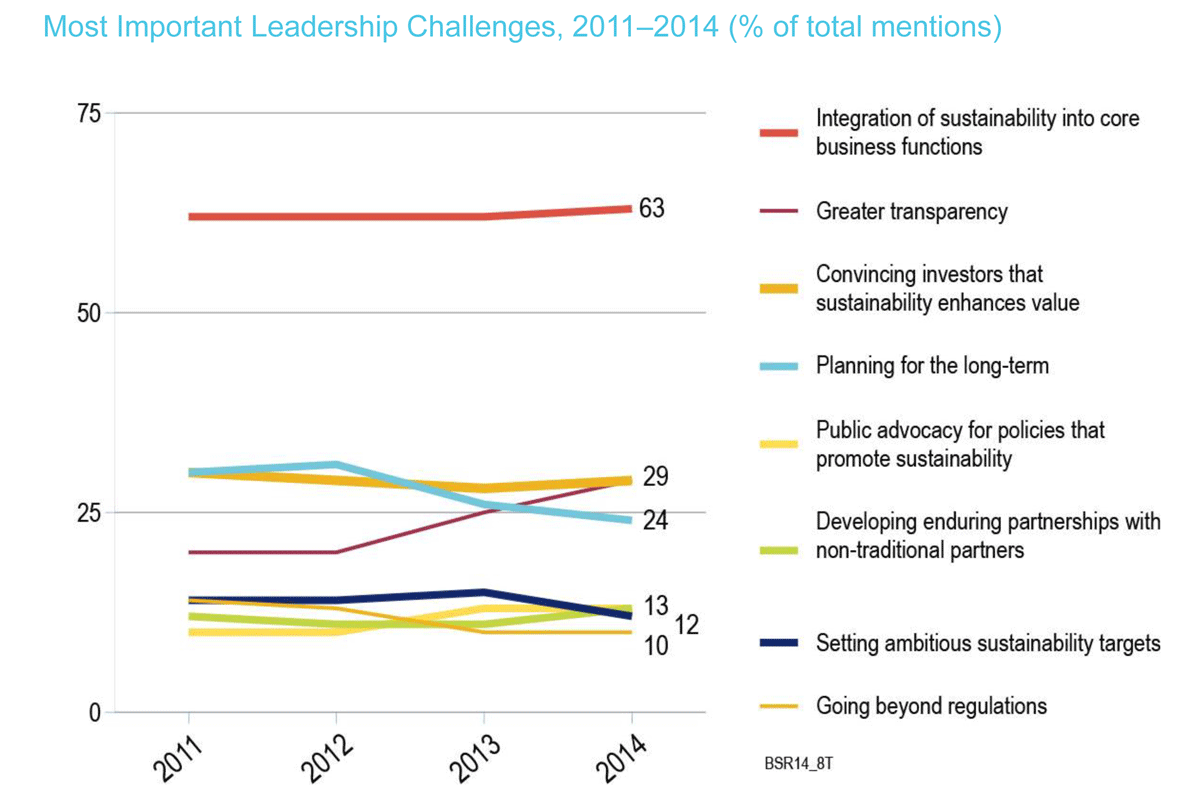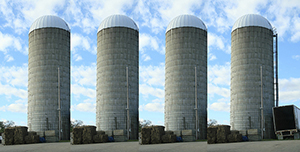Compartmentalized v. Infused Sustainability
Financial Benefits are Known, But Difficult to Unlock

To the public at large, the concept of sustainability tends to be associated with the color green, but those in the sustainability profession know far better that our work on a daily basis is dominated by the color gray.
Sustainability is one of those ventures which requires broad-based cooperation within an organization to have a chance of succeeding, but it can be difficult to know what that looks like. Metrics and surveys can reflect far more positive outcomes than are actually happening within the organization, and can signal far more progress than is actually taking place. Why? Because time and time again, experience and research tells us people are notoriously bad at self-reporting and predicting behavior, even when acting with the best of intentions. In fact, self-reporting is so poor in its performance of actual behavior that there are a few consumer research methodologies designed to use shifts in self-reporting after a distraction exercise –not the actual self-reported scores themselves–to measure sentiment. More on that later.
In talking to practitioners, it tends to be stories and episodic experiences more than survey results that signal the program is moving in the right direction:
"The product development team brought us into the early-stage design criteria last week."
"Legal has started to give sustainability a seat at the table in identifying risks to the organization."
"We've really started getting support from the business units on lifecycle analysis."
What is especially unique about sustainability's shade of gray is that even though it tends to have formal support at the C-suite level, sustainability programs tend to face a unique set of goals and constraints:
- Dedicated headcount tends to be very low. In 2013, a year that Caterpillar made $55.7B and had somewhere around 118,000 employees, it had three–three –dedicated sustainability employees.
- Because dedicated headcount is low, sustainability programs tend to use employees and resources that "report to someone else."
- Sustainability budget for initiatives is many times formed at the individual project level, and therefore fluid.
- Success can be heavily dependent on how many business units are willing to proactively share.
- It ties to virtually every function within a business, so it does not have a single fixed role.
- It may be perceived in some organizations as a hindrance more than a help (for example, the work required for ISO 14001).
- Without conscious work and lobbying, it probably does not have revenue or sales applied to its work.
In its State of Sustainable Business Survey 2014, BSR and GlobeScan surveyed more than 700 experienced sustainability professionals about a range of topics, but the question relating to sustainability leadership challenges underscores the point at hand:

- The image is a line graph titled "Most Important Leadership Challenges, 2011–2014 (% of total mentions)". The graph plots the percentage of total mentions of various leadership challenges over the years 2011 to 2014. The vertical axis represents the percentage from 0 to 75, and the horizontal axis represents the years 2011 through 2014. There are eight colored lines representing different challenges.
- The topmost line, in red, indicates "Integration of sustainability into core business functions", which has a consistent percentage in the 60s with a final annotation at 63%.
- The second-highest line, also in red but slightly darker, represents "Greater transparency", showing a slight decrease over the years and ending at 29%.
- Other lines representing challenges such as "Convincing investors that sustainability enhances value", "Planning for the long-term", "Public advocacy for policies that promote sustainability", and "Developing enduring partnerships with non-traditional partners", show fluctuations between approximately 10% and 25%.
- The lines for "Setting ambitious sustainability targets" and "Going beyond regulations" remain consistently below 15%.
Of all the potential challenges facing a working sustainability program, it isn't a challenge of resources, it is a challenge of integration of sustainability into the core of the business. But the question then becomes, if we know all of the acknowledged benefits of a robust sustainability initiative to the organization, how then can it be a question of integration? It would seem that the answer to that question is sometimes related to sustainability's broad reach, making it difficult to integrate deeply into only a handful of functions... there is so much to be done that the programs end up taking very finite people resources and try to do too much.
In going beyond rote integration and looking at motivations, actions, and organizational frames for sustainability, we may also consider that there is no one type of integration. In fact, one of the types of organizational integration of sustainability actively works to erode the reach of the program.
Compartmentalized Sustainability

Chances are many new sustainability programs, even with significant support from management, will function in a compartmentalized way for a significant period of time. Despite best efforts, many sustainability efforts may never leave a place of compartmentalization. What is meant by compartmentalized sustainability is, literally, sustainability is a discrete function within the organization, and that function is overwhelmingly isolated to a special set of specific initiatives.
For example, if a large customer of the organization has their own sustainability program and supplier reporting requirements and sends an 80 page questionnaire to be completed, chances are it will land on the desk of the person with "sustainability" in their title to decipher and complete. Speaking with colleagues at publicly traded companies, and especially those supplying raw materials or components, completing these surveys is a 20-hour a week effort for someone on their staff to complete the basic surveys and requires more time and information gathering to answer first-time questions.
Needless to say, completing these surveys can be a significant time drain, and can have a consequence of preventing the sustainability folks in an organization from taking on their own proactive projects. So, the program has a difficult time gaining the necessary reach within the organization to affect change or institute proactive work.
Infused Sustainability
To achieve the types of financial and organizational benefits described earlier in the readings in this Lesson, sustainability is not a role, it is a core function of the organization, and lives everywhere. In these types of organizations, the number of people with "sustainability" in their title may be the same as organizations with compartmentalized sustainability, but the role of sustainability becomes one which is far more about enabling others internally.
When sustainability is infused, it may have been originally shepherded in by a passionate founder or CEO, but it tends to be perpetuated by a genuine value for being a sustainable organization and one which succeeds and leads. So while the intent and basic knowledge of sustainability may be throughout the organization, there is typically the need for resources to provide more insight, find resources, and tie it all together. This is the role of the sustainability team: to assist the rest of the organization in their infused sustainability efforts and act as keepers of central information and strategy.
Naturally, the next question is something like, "OK. So how does one infuse sustainability into the organization?" Well, there's certainly no single or easy answer to that question. Otherwise, that 63 % of organizations having trouble integrating sustainability into the organization would have likely found the solution long ago.
I will say this: Many of the methods and philosophies we will employ in creating sustainability-driven innovations in this course can just as easily be applied within an organization as to create an offering. Furthermore, showing–not telling–what sustainability can bring to the organization through the creation of new offerings can go a long way to get people in an organization interested in what they can do, as well. We have seen this first-hand.
So, in understanding how this all ties back to Profit as a 3P imperative in the organization, it is important to consider that infused sustainability reinforces the profitability and prosperity of the organization just as much as the profitability of sustainability-related offerings can work to create infused sustainability within the organization. It really is a cycle of prosperity... or at least a "chicken or egg" arrangement.
